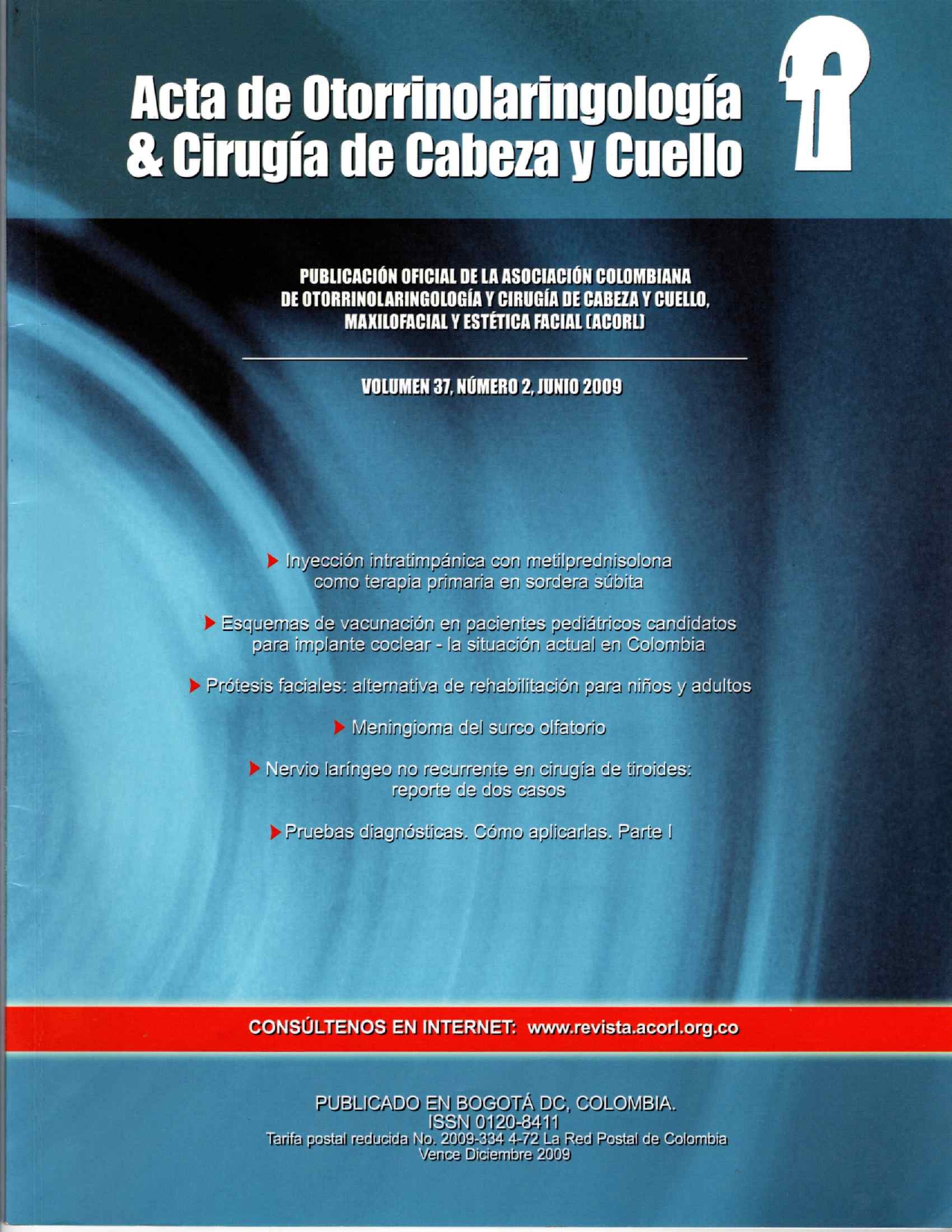Prótesis faciales: alternativa de rehabilitación para niños y adultos
Contenido principal del artículo
Resumen
Existen diversas opciones de rehabilitación para aquellos pacientes que presentan defectos faciales de origen congénito, traumático u oncológico, la mayoría de ellas tomando como principal opción la reconstrucción quirúrgica. Sin embargo, existen situaciones clínicas en las cuales esas alternativas aumentan morbilidad, exponen a otras complicaciones y en muchos casos se obtienen resultados poco satisfactorios. En contraste se propone como alternativa de rehabilitación la adaptación de prótesis faciales para el manejo de diversos estados clínicos, brindando adecuada aceptación a éstas, obteniendo resultados satisfactorios en los pacientes, disminuyendo riesgos, aumentando la autoestima y contribuyendo a mejorar su calidad de vida.
Detalles del artículo
Sección

Esta obra está bajo una licencia internacional Creative Commons Atribución-CompartirIgual 4.0.
Este artículo es publicado por la Revista Acta de Otorrinolaringología & Cirugía de Cabeza y Cuello.
Este es un artículo de acceso abierto, distribuido bajo los términos de la LicenciaCreativeCommons Atribución-CompartirIgual 4.0 Internacional.( http://creativecommons.org/licenses/by-sa/4.0/), que permite el uso no comercial, distribución y reproducción en cualquier medio, siempre que la obra original sea debidamente citada.
eISSN: 2539-0856
ISSN: 0120-8411
Cómo citar
Referencias
Conroy BE. A Brief Sortie into the History of Cranio-Oculofacial Prosthetics. Facial Plastic Surgery 1993; 9 (2) : 89-115.
Johnson F, Cannavina G, Brook I, Watson J. Facial prosthetics: techniques used in the retention of prostheses following ablative cancer surgery or trauma and for congenital defects. Eur J Prosthodont Restor Dent 2000; 8: 5-9.
Frohlich C EN: Celluloid Prosthesen Klinische Blatter. Augenheilkunde; Berlin, 1881; 349.
Tjellstrom A. Osseointegrated implants for replacement of absent
or defective ears. Clin Plast Surg 1990; 17: 355-366.
Wolfaardt J, Gehl G, Farmand M, Wilkes G. Indications and methods of care for aspects of extraoral osseointegration. Int. J. Oral Maxillofac Surg. 2003; 32: 124-131.
Granström G. Craniofacial osseointegration. Oral Dis. 2007;13 (3): 261-269.
Lemon JC; Kiat-Amnuay S, Lawrence G; Martin JW, Chambers MS. Facial prosthetic rehabilitation: preprosthetic surgical techniques and biomaterials. Facial Plastic Surgery 2005; 13 (4): 255-262.
Bauer BS. Reconstruction of the microtic ear. J Pediatr Surg. 1984; 19 (4): 440-445.
Cho BC, Lee SH. Surgical results of two-stage reconstruction of the auricle in congenital microtia using an autogenous costal cartilage alone or combined with canaloplasty. Plast Reconstr Surg. 2006; 117 (3): 936-947.
Bennun RD, Mulliken JB, Kaban LB, Murray JE. Microtia: a microform of hemifacial microsomia. Plast Reconstr Surg. 1985; 76 (6): 859-865.
Kelley PE, Scholes MA. Microtia and Congenital Aural Atresia. Otolaryngol Clin N Am 2007; 40(1): 61-80
Tanner PB, Mobley SR. External Auricular and Facial Prosthetics: A Collaborative Effort of the reconstructive Surgeon and Anaplastologist. Facial Plast Surg Clin N Am 2006; 14: 137-145.
Dahl JE, Polyzois GL. Irritation test of tissue adhesives for facial prostheses. The Journal of Prosthetic Dentistry, 2000; 84 (4): 453-457.
Malard O, Espitalier F, Bordure P, et al. Biomaterials for tissue reconstruction and bone substitution of the ear, nose and throat, face and neck. Expert Rev Med Devices 2007; 4 (5): 729-739.
Granstrom G. Osseointegration in Irradiated Cancer Patients: An
Analysis With Respect to Implant Failures. J Oral Maxillofac Surg 2005; 63: 579-585.





